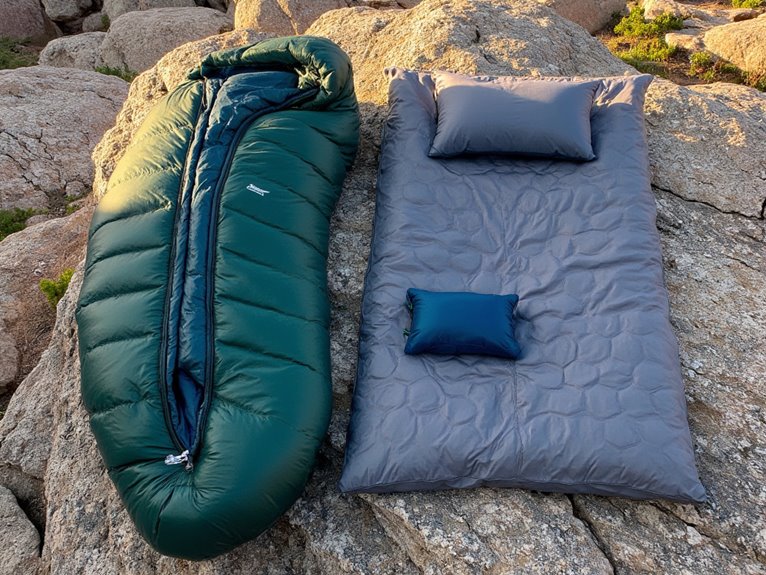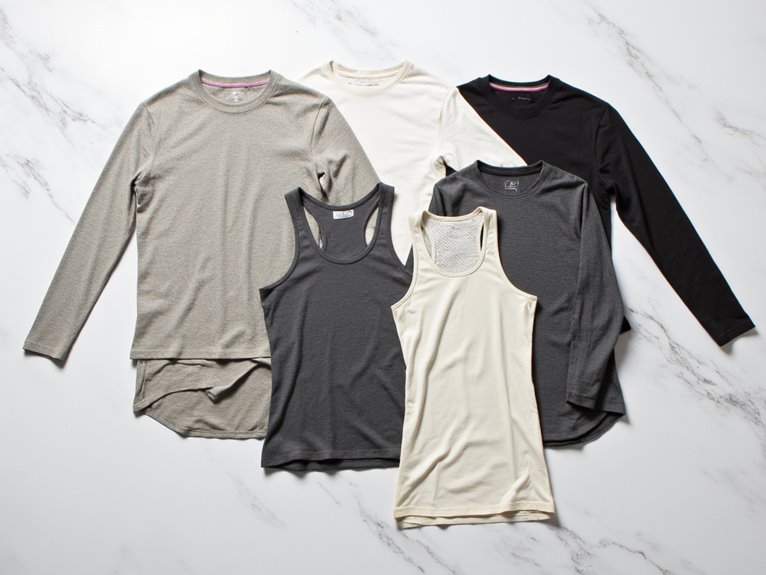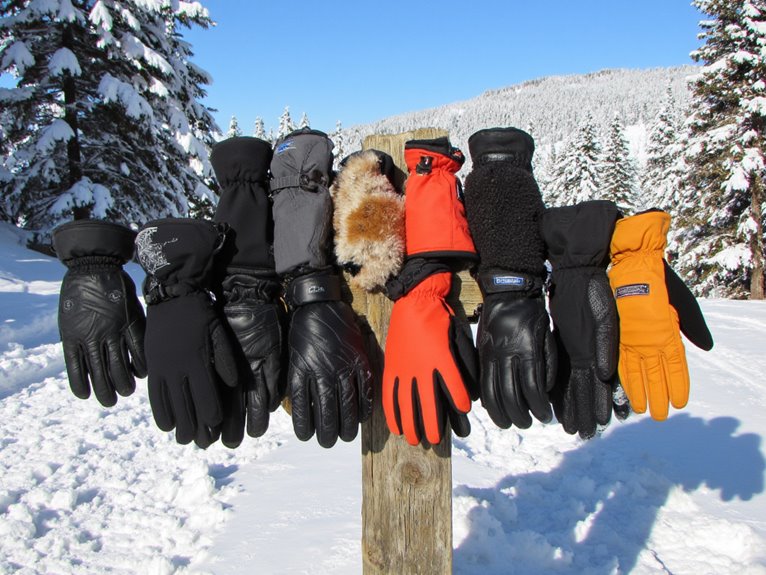Is 28L Too Big for a Daypack?
A 28-liter daypack can be suitable for day-long excursions, but its ideal use depends on factors such as trip duration, activity type, and personal packing habits. While it provides ample space for essentials, it also risks overpacking and added weight. Striking a balance between packing what's necessary and avoiding unnecessary bulk is key. Understanding specific gear requirements for activities like hiking, camping, or climbing helps allocate pack space efficiently. Additionally, a 28L pack's impact on comfort and mobility should be considered. As you navigate the nuances of daypack capacity, discover how to optimize your packing strategy for a more efficient adventure.
We are supported by our audience. When you purchase through links on our site, we may earn an affiliate commission, at no extra cost for you. Learn more. Last update on 1st January 2026 / Images from Amazon Product Advertising API.
Understanding Daypack Capacity Needs
Determining the ideal daypack capacity begins with evaluating your specific needs, which are often influenced by factors such as the type and duration of your trip, personal packing habits, and the activity or activities you plan to engage in.
For instance, a hiker setting out on a short, leisurely stroll may require less capacity than a trail runner who needs to carry more gear.
Additionally, consider the clothing and layers you'll need to bring, as well as any specific equipment required for your activity.
Weighing Pros and Cons of 28L
A 28-liter daypack's capacity can be both a blessing and a curse, offering ample space for gear but also increasing the risk of overpacking and added weight.
On the plus side, a 28L daypack provides ample room for essentials like extra layers, snacks, and a first aid kit. This can be particularly beneficial for longer or more remote outings.
However, the extra capacity can also lead to overpacking, resulting in a heavier and less comfortable pack.
It's essential to strike a balance between packing what's necessary and avoiding unnecessary bulk.
Activity Type and Gear Requirements
In the realm of daypack selection, the type of activity and corresponding gear requirements play a vital role in determining the ideal pack size.
For instance, hikers and backpackers often prioritize lightweight essentials, while campers and climbers may necessitate more extensive gear lists.
Understanding the specific demands of each activity helps inform the decision of whether a 28L daypack is too big or just right in terms of.
Hiking and Backpacking Essentials
For multi-day backpacking trips or thru-hikes, a carefully curated selection of gear is essential to guarantee a safe and enjoyable journey.
Hiking and backpacking essentials include a first-aid kit, navigation tools, and emergency shelter.
A lightweight and reliable backpack, sleeping bag, and sleeping pad are also indispensable.
Additionally, a water filtration system or water purification tablets provide access to safe drinking water.
A multi-tool or pocket knife, fire starter, and extra layers of clothing round out the must-haves.
These items provide the foundation for a successful and enjoyable backpacking trip.
Lightweight Gear Priorities
Depending on the type and duration of the adventure, backpackers must strike a balance between packing lightly and bringing necessary gear, leading to a careful consideration of lightweight gear priorities.
For day hikes, a minimalist approach may suffice, focusing on essentials like water, snacks, and a first-aid kit.
Multi-day trips, on the other hand, require more extensive gear lists, including shelter, sleeping bag, and cooking equipment.
Prioritizing gear based on activity type and duration helps backpackers allocate precious pack space efficiently.
Camping and Climbing Needs
Two primary activity types, camping and climbing, necessitate distinct gear requirements that backpackers must carefully consider when packing for their adventure.
Camping requires more bulkier items, such as a tent, sleeping bag, and sleeping pad, which take up significant space in a daypack.
Climbing, on the other hand, demands specialized gear like ropes, harnesses, and carabiners, which, although smaller, are heavier and more dense.
When planning a trip that involves both camping and climbing, backpackers must strike a balance between packing essential gear and managing weight and space constraints.
A 28L daypack may be too small for camping gear, but sufficient for climbing essentials, highlighting the importance of prioritizing gear based on activity type and trip duration.
Comfort and Mobility Considerations
A 28L daypack's size can substantially impact the wearer's comfort and mobility, particularly during extended periods of hiking or traveling.
A larger pack can cause fatigue and discomfort, especially if not properly fitted or loaded. This can lead to poor posture, strained shoulders, and reduced mobility.
Additionally, a 28L pack may inhibit movement in tight spaces, such as narrow trails or crowded public transportation.
When choosing a daypack, it's essential to weigh the trade-off between capacity and comfort. A smaller pack may require more frequent packing and unpacking, but it can also promote better posture, reduced fatigue, and increased mobility.
Packing Strategies for Efficient Use
To maximize the efficiency of a 28L daypack, outdoor enthusiasts must adopt strategic packing techniques that prioritize organization, accessibility, and compression to guarantee that all necessary items are easily retrievable while minimizing empty space.
Effective packing begins with categorizing gear into essential, frequent-use, and emergency items.
Pack the most frequently used items in easily accessible pockets, and store less frequently used items in deeper compartments.
Utilize compression bags and packing cubes to optimize space and prevent clutter.
Alternative Capacity Options to Consider
If a 28L pack is too bulky, smaller options like 18L or 20L daypacks may be a better fit for shorter trips or minimalist adventurers.
On the other hand, if a 28L pack is too small, larger capacities like 30L, 35L, or even 40L daypacks can provide the extra storage needed for extended trips or gear-intensive activities.
Some brands also offer adjustable torso systems, allowing the pack to adapt to different body types and capacities.
Ultimately, it's essential to assess individual needs and preferences to determine the ideal daypack capacity.
Real-World Scenarios and User Reviews
Examining real-world scenarios and user reviews provides valuable insights into the practicality of 28L daypacks in various outdoor pursuits.
Many hikers, bikers, and climbers have shared their experiences with 28L daypacks, offering firsthand accounts of their performance in diverse environments.
User reviews highlight the versatility of 28L daypacks, which can comfortably carry essentials for day-long excursions, while also accommodating additional gear for unexpected circumstances.
Real-world scenarios demonstrate that 28L daypacks are suitable for fast-paced activities, such as trail running or mountain biking, where minimalism is key.
However, they may not be ideal for more leisurely pursuits, like family picnics or casual hikes, where extra comfort items are desired.
These practical examples help clarify the suitability of 28L daypacks for specific outdoor activities.




